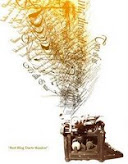Not just anyone could paint the pictures that appeared inside ancient Egyptian tombs and monuments. Those paintings were extremely important and had to be done perfectly because they were meant to help the dead in the afterlife.
Painters usually worked as teams with one master craftsman overseeing the work of several apprentices. First, a grid was drawn on a piece of papyrus. Then the image was drawn on top of the grid. In ancient Egyptian art, each figure had to be a specific size. For example, a grown man was always 19 squares from the bottom of his feet to the top of his head.
Egyptian art was standardized. Not only were certain figures always the same number of squares tall and wide, but the there was a formula for the way to draw figures. When you look at Egyptian paintings (and carvings) you’ll notice that the face is always sideways, the upper body always faces forward, and the legs and feet face sideways. This is not a natural position. You’ll also notice that the one eye that shows is always painted on the side of the face. The Egyptians wanted to show only the most important parts of the body and they wanted to show those parts in the most attractive way. They painted the eye on the side of the face so it could be shown looking straight out. Feet don’t look like feet from straight on so the Egyptians painted them from the side.
 When the drawing was perfect, a thin layer of plaster was spread over the area to be painted. It was sanded and smooth until it was shiny. Some of the apprentices would then use cords dipped in red paint to create a grid on the wall. The image was then painted onto the wall in red paint by the apprentices. They had to be careful to paint the figure exactly the way it looked on the papyrus. The master craftsman corrected the pictures in black before the apprentices filled in the figure with colored paints.
When the drawing was perfect, a thin layer of plaster was spread over the area to be painted. It was sanded and smooth until it was shiny. Some of the apprentices would then use cords dipped in red paint to create a grid on the wall. The image was then painted onto the wall in red paint by the apprentices. They had to be careful to paint the figure exactly the way it looked on the papyrus. The master craftsman corrected the pictures in black before the apprentices filled in the figure with colored paints. Egyptians used only eight colors, all mixed from natural materials likes rocks and plants. The colors have stayed bright in some place because the sun doesn’t reach the inside of tombs to bleach away the paints.
Egyptians used only eight colors, all mixed from natural materials likes rocks and plants. The colors have stayed bright in some place because the sun doesn’t reach the inside of tombs to bleach away the paints.Sometimes paintings were done on papyrus scrolls instead of on walls. The figures still followed the same formulas.
 Check back tomorrow for the next post in this series on Egyptian art!
Check back tomorrow for the next post in this series on Egyptian art!
EDITED TO ADD: Ancient Egyptian Art, Part 2- Carvings, Ancient Egyptian Art, Part 3- Sculpture, Ancient Egyptian Art, Part 4- Amarna Art, Ancient Egyptian Art, Part 5- Fayum Portraits






14 comments:
Thanks for this great information
Thanks! What was the paint made of?
the paint is plaster and paint so the plaster has a chemical reaction and thats why its still here today
The ancient Egyptians created colors using plants and minerals they found in nature. To make blue, for example, they ground up lapis lazuli, a blue mineral. They then added the ground up color to a binder. The binder is what holds the color to the papyrus or cave wall. The binder makes the powdered color sticky. The website below tells you a little more about how the ancient Egyptians made their paint and tells you how to make your own. If you decide to try it, you'll want adult help.
http://www.well.ox.ac.uk/Recipe%20-%20Paint.pdf
The second anonymous is right. Plaster holds paint for a long time partly because of the reaction that occurs.
Thanks for the comments!
Thank you heaps for the helpful information. It has helped me a great deal for my assignment. :)
Bonjour! Felipe Berens . payday loans
That is so cool! I'm using the scroll picture for a school project. We have a tomb night thing and have to make an artifact.
This is amazing!!! My main thing that I needed to find was why Egyptians painted only one eye on the person and you answered it for me perfectly!! where did you learn all of this information? I'm amazed and this sight is soooo helpful I thank you A LOT
HI
This is great!!!! i was supposed to find out why all of the paintings are painted the same way (all people same positions), and i just needed to scroll down a bit and the answer was right there!!!!!!
THANK YOU!!!!
THANKS A LOT FOR THE INFO
This info is great! How did you find all this information? Perfect material for my assignment.
This information is great. I've just got a slight confusion though. Above, it said the apprentice would draw in red, and the master would correct in black. However, on another website I found, it said the apprentice would draw in black, and the master would correct in red. Could you please shed a bit of light on this? Many thanks!
Post a Comment